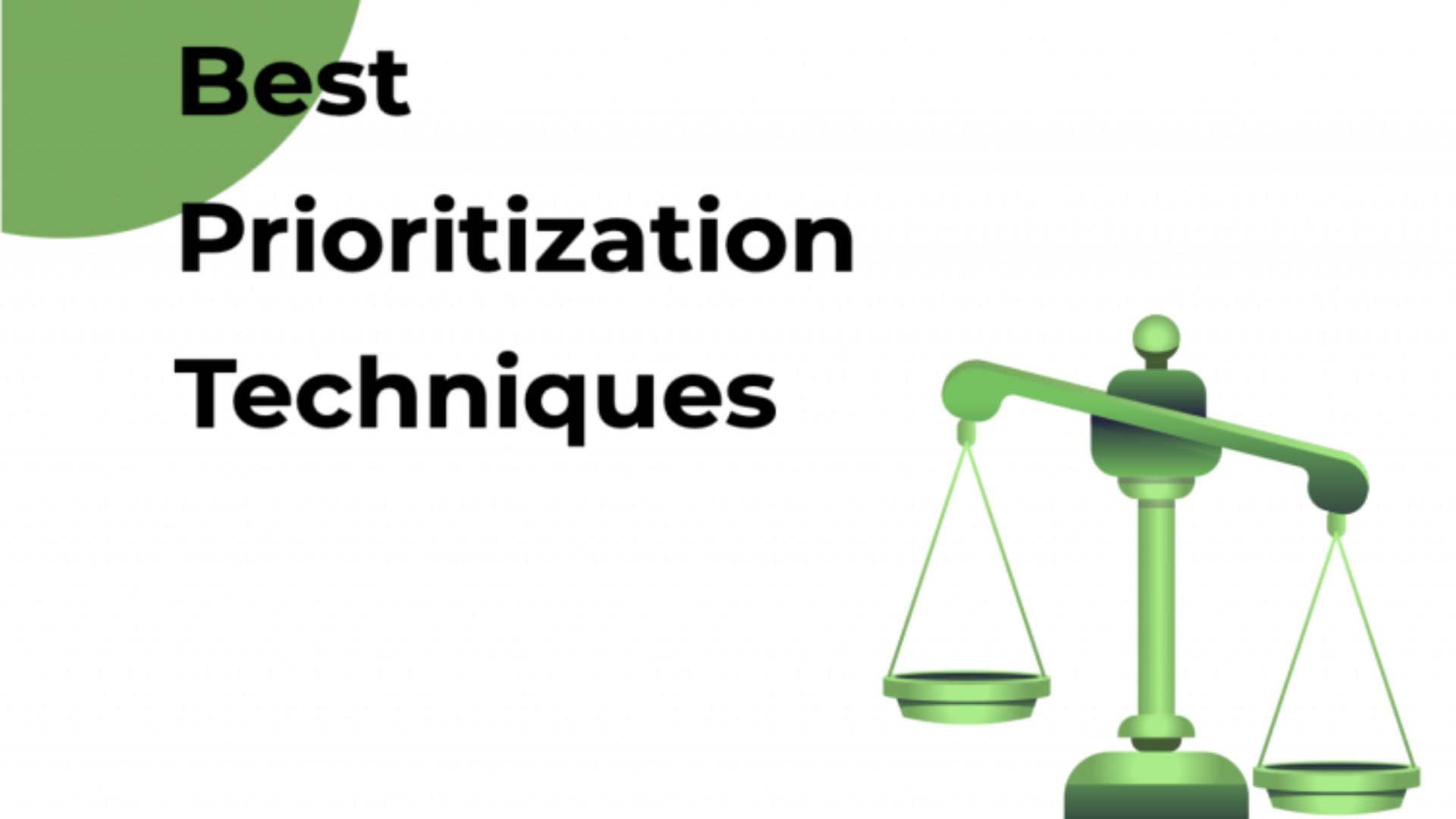Project Prioritization Mastery 2024: Top Tools for Stellar Outcomes
In the bustling world of project management, it’s easy to feel overwhelmed with numerous tasks vying for attention. That’s where the magic of project prioritization comes into play. It’s not just about ticking off tasks from a list, but rather, it’s an art of strategically aligning resources to maximize productivity and results.
Project prioritization can be a game-changer, transforming chaos into a well-oiled machine. It’s about making smart decisions that drive success. So, whether you’re a seasoned project manager or just starting out, understanding the nuances of project prioritization is crucial. Let’s dive into this intriguing world and unravel its secrets together.
What do you Understand by Project Prioritization?
Project prioritization is a critical process in project management and, as a project manager, I understand its impact quite profoundly.
The Importance of Prioritizing Projects
Prioritizing projects paves a clear path for resource allocation, setting me on the track to efficiency and productivity. Without a set order, I quickly recognize the emergence of chaos—an avoidable situation with careful planning and prioritization. An optimized project list lets me conquer any uncertainty or disorder in managing tasks, reign in complexities, and optimize operations.
Rather than a tangled web of tasks and deadlines, I see a streamlined and manageable sequence of projects lined up for my execution. This strategic alignment presents not only a preventive approach against missed deadlines but also a proactive stance in driving success. By placing projects with the highest impact or urgency first, I ensure that no essential task falls through the cracks. It’s a pivotal strategy that goes beyond basic task completion.
Key Principles of Project Prioritization
My approach towards project prioritization isn’t arbitrary; on the contrary, it’s guided by particular principles. Primarily, alignment with business objectives tops the chart. If a project doesn’t contribute significantly to meeting key business goals, it’s automatically given a lower preference. It’s important for me to assess each project on its return on investment (ROI) and value it adds to the organization.
The second principle is urgency. There are always projects that are time-sensitive where any delay could lead to significant negative consequences. I tag these projects as ‘urgent’ and prioritize them correspondingly in my task list.
Lastly, resources play a defining role in project prioritization. Not all projects require equal amounts of resources. By understanding the resource requirements—both human and capital, I can strategically prioritize projects that are less resource-intensive and deliver quick wins, thereby enhancing the overall productivity of my team.
By incorporating these principles into my project prioritization strategy, I aim to deliver results that are not only efficient but also beneficial to the broader business objectives. It’s not just about ticking off tasks from a list; it’s about making sure that the right tasks are ticked off at the right time.
Factors that Influence Project Prioritization
Delving deeper into the science behind project prioritization, there are specific factors that take center stage. Variances in these aspects have a significant impact on the ranking process. The following sub-sections discuss these determinants.
Strategic Alignment and Business Goals
First on the list is alignment to strategic business objectives. Every action within an organization must contribute towards its vision, mission and business goals. This is a non-negotiable requirement that drives project prioritization. Projects that demonstrate direct links to strategic objectives secure a higher rank. For instance, if an organization’s strategic goal is to expand into new markets, projects related to market research, product enhancement, or development of new marketing campaigns are likely to be seen as high priority.
Resource Availability and Constraints
Resource availability and constraints form the second crucial determinant. Availability of resources, be it human, financial, time, infrastructure or technology, influences priority immensely. Projects cannot function in a vacuum, they necessitate the aforementioned resources. If resources are scarce, projects have to be prioritized based on the extent of resources required. For example, a high-volume project with tight deadlines will require more human resources and may be marked as a high priority.
Risk Assessment and Management
Finally, comes risk assessment and management. Risks are inherent in every project. The emergence of unexpected challenges can put the entire project plan in jeopardy. Therefore, an accurate risk assessment is essential, as well as measures for risk mitigation. High-risk projects, especially those that have the capacity to impact business continuity or profitability, should be prioritized. To illustrate, a project that mitigates a potential data security risk would most likely take precedence over a project aimed at internal process improvement.

Project Prioritization Techniques
As part of the comprehensive approach to project management, various techniques play a pivotal role in augmenting project prioritization. These techniques assist in identifying and ranking the projects based on parameters such as strategic alignment, resource allocation, and risk profiling. Let’s dive deeper into some of these techniques.
The Eisenhower Matrix
The Eisenhower Matrix, named after President Dwight D. Eisenhower, enables segregation of tasks based on their urgency and importance. It’s a 2×2 grid, where:
- Quadrant One houses important and urgent tasks, the tasks that require immediate attention.
- Quadrant Two holds important but not urgent tasks, offering scope for planned execution.
- Quadrant Three fills with not important but urgent tasks, generally delegated.
- Quadrant Four contains not important and not urgent tasks, ideally limited in number or eliminated.
This technique allows an effective prioritization of tasks that align with the organization’s strategic goals and desired outcomes.
The MoSCoW Method
Stand for Must have, Should have, Could have, and Won’t have, the MoSCoW Method establishes priority by categorizing needs into four groups:
- Musts: Critical for project success and non-negotiable.
- Shoulds: Important but not vital, delayable without compromising success.
- Coulds: Desirable but not necessary, can be postponed or omitted based on constraints.
- Wont’s: Least critical and often postponed for future projects.
Using the MoSCoW method, organizations can balance resources efficiently with project requirements and make informed decisions.
Cost-Benefit Analysis
Cost-Benefit Analysis provides a quantitative measure for comparing the cost of a project against its benefits. It involves calculating the net present value (NPV) of project cash inflows and outflows, resulting in a comparison basis for projects. A project with a positive NPV adds value to the company and is preferred over projects with negative or lower NPV.
Scoring Models and Ranking Methods
Ranging from simple scoring models to multi-criteria decision analysis (MCDA), these methods serve to evaluate and rank projects. They typically assign scores or weights to parameters such as strategic alignment, financial impact, or resource requirements. Suitable for organizations with multiple projects, these techniques draw a clear line of priority, assisting in resource allocation and decision-making.
Implementing Project Prioritization in Your Organization
To enact a successful transition to systematic project prioritization, there are specific approaches and methods that can simplify the process. This section aims to provide a guided understanding of the key steps to develop a project prioritization framework, overcoming common prioritization challenges, and integrating prioritization into project management processes.
Steps to Develop a Prioritization Framework
Developing a prioritization framework involves a series of distinct steps that create a strong, efficient structure.
- Define Prioritization Criteria: Based on the organization’s strategic goals, formulate criteria for prioritization like ROI, strategic alignment, risk factors, and urgency.
- Devise a Scoring Method: Choose a numerical scoring method that can accurately measure the alignment of each project with the defined criteria.
- Evaluate and Prioritize Projects: Systematically score every project and rank them according to the overall score.
- Review Prioritization: Regularly reassess the ranked projects to accommodate evolving business objectives and changing environments, ensuring the prioritization remains relevant.
Overcoming Common Prioritization Challenges
Implementing project prioritization may encounter challenges. Here are some common issues and how to overcome them.
- Resistance to Change: People often resist changes, especially if they disrupt established routines. Communicate the benefits of the new approach effectively and involve all stakeholders in the process to reduce resistance.
- Complex Prioritization Criteria: Overcomplicated criteria can lead to confusion and inconsistencies in scoring. Stick with fundamental, universally understood criteria that align with business goals.
- Unrealistic Timeframes: Overly ambitious timelines can lead to burnout and rushed, poor-quality work. Ensure the schedules are realistic and offer sufficient time to complete each task.
Integrating Prioritization into Project Management Processes
Incorporating prioritization into daily project management procedures can help sustain this systematic approach and enhance project outcomes.
- Strategic Planning: Make prioritization an integral part of strategic planning. Align projects with the organization’s overall vision, mission, and strategies.
- Resource Allocation: Use prioritization to facilitate objective resource allocation. High priority projects should receive more resources and attention.
- Progress Tracking: Track the progression of projects and adjust priorities as necessary, ensuring alignment with evolving goals and changing circumstances.
By establishing a robust project prioritization process, an organization can effectually align its projects with strategic objectives, overcome common challenges, and smoothly integrate prioritization into recurring project management processes.

Tools and Software for Effective Project Prioritization
Project prioritization isn’t complete without the use of well-designed tools and software. I’ve discovered that making use of technological support maximizes productivity and streamlines processes, and I’m here to expound on the significant advantages of these tools. I’ll focus on their benefits first, then delve into some prominent options available for project managers seeking to integrate prioritization features into their operations.
Benefits of Using Project Prioritization Tools
Project prioritization tools bring practical benefits to organizations. For instance, they provide clear and unbiased judgments based on predefined criteria. This mechanism removes subjectivity in project rankings, making decisions purely data-driven.
Additionally, with a reliable project prioritization tool, time efficiency is significantly improved. The software aids in analyzing multiple projects at once, reducing the hours spent on manual reviews. Examples of this efficiency are seen in organizations utilizing software like Trello or Jira, where project evaluations are performed quickly and effectively.
Lastly, these tools provide comprehensive visuals for decision-making. Graphics like Gantt charts, risk heat maps, and scoring matrices paint a clear picture of project standings. With these visuals, project managers can easily perceive the status, risks, and benefits of all their projects.
Popular Project Management Tools with Prioritization Features
Numerous project management tools come with built-in project prioritization features. Here are a few of the most popular ones:
- Monday.com: A highly flexible tool, Monday.com offers prioritization functionality as part of its workflow automation features. It allows project managers to rank tasks based on custom-defined criteria and clearly visualizes the order of execution.
- Wrike: This tool provides robust prioritization features, such as the ability to assign weights to different criteria and calculate overall project scores automatically. It also provides impressive graphical representations of projects and their statuses.
- Asana: Recognized for its elegance and simplicity, Asana enables easy task categorization and prioritization. It supports methods like the Eisenhower Matrix, enabling teams to quickly identify and focus on high-priority tasks.
- Zoho Projects: A key highlight of Zoho Projects is its thorough integration of prioritization with other project management activities. This marrying of functions ensures that prioritization remains at the heart of the project life cycle, promoting strategic alignment and efficiency.
Leveraging these tools forms an essential part of modern project management practices. They enable efficient project ranking and contribute to more informed decision-making, facilitating the attainment of organizational objectives.
Conclusion
Project prioritization isn’t just a buzzword – it’s a critical component in steering your organization towards its strategic goals. With proven techniques like the Eisenhower Matrix and the MoSCoW Method, you’ve got the tools to make tough decisions easier. And let’s not forget about the power of project prioritization tools. Platforms like Monday.com, Wrike, Asana, and Zoho Projects are revolutionizing the way we manage and prioritize projects.
They’re giving us the ability to rank criteria, score projects automatically, and visualize our workload like never before. So, if you’re serious about project management, getting your priorities straight should be… well, a top priority. With the right methods and tools at your disposal, you’ll be well on your way to more efficient, effective project management.
Frequently Asked Questions
What is the significance of project prioritization in project management?
Project prioritization is key for strategic alignment and successful outcomes in project management. It helps businesses focus on projects with the most value and aligns resources accordingly to achieve desired results.
What prioritization techniques does the article mention?
The article refers to the Eisenhower Matrix and the MoSCoW Method as effective prioritization techniques businesses can implement for managing their projects more efficiently.
What benefits do project prioritization tools provide?
Project prioritization tools enhance decision-making and efficiency in project management. They offer features like custom-defined criteria ranking, automated project scoring, and graphical project representations, which help in better project overview and tracking.
What are some popular project prioritization tools?
Some popular project prioritization tools noted in the article are Monday.com, Wrike, Asana, and Zoho Projects. These platforms offer robust features that aid in project prioritization and management.
How do project prioritization tools enhance decision-making?
Through features such as custom-defined criteria ranking, automated project scoring, and graphical project representations, these tools allow for clearer visibility, critical point identification, and streamlined project management – thereby enhancing overall decision-making.

Leave a Reply